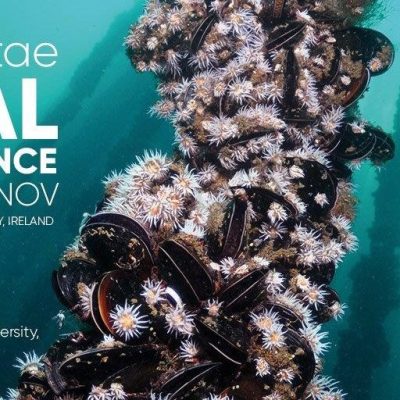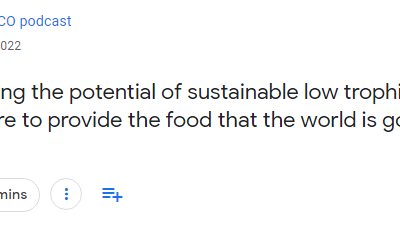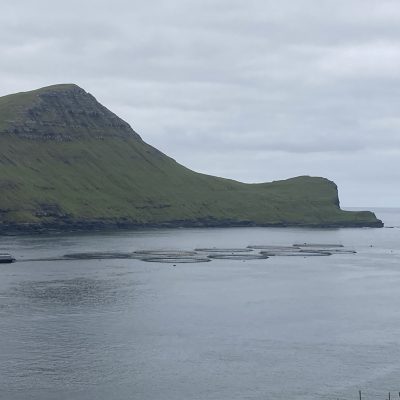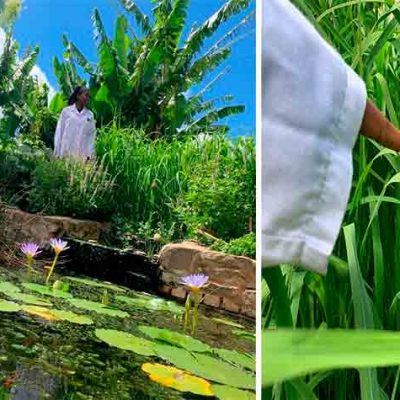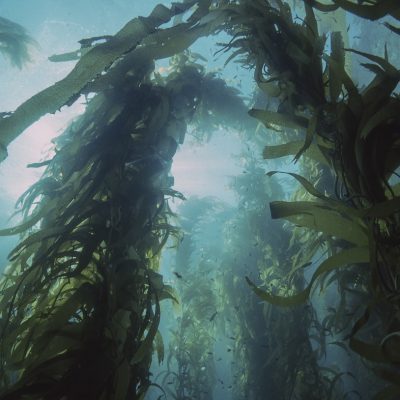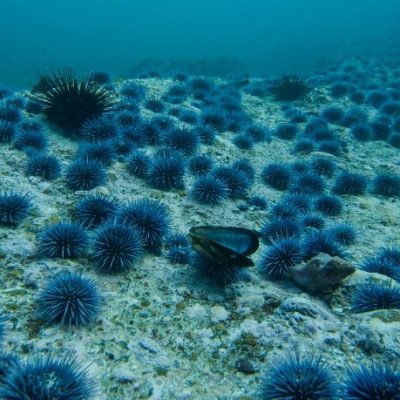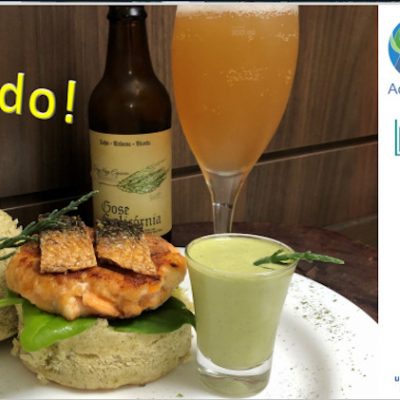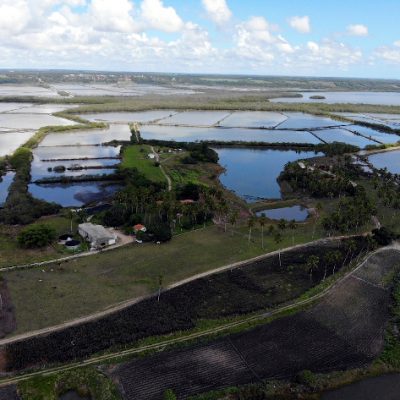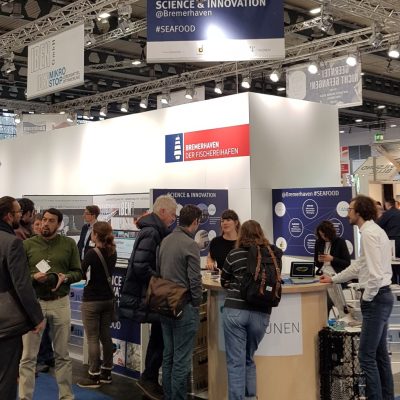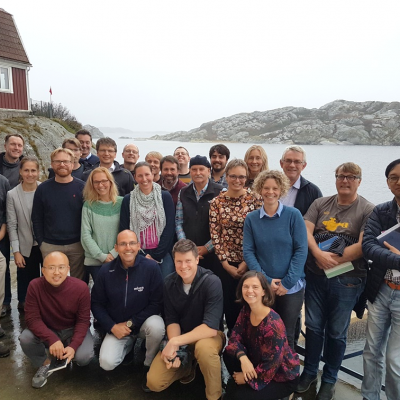AquaVitae and MARE gathered to discuss state-of-the-art of low trophic aquaculture governance
AquaVitae ´s Policy Brief was officially launched to DG-MARE on April 15th.On April 15th AquaVitae held a Policy
Advancing Low trophic aquaculture: AquaVitae Final conference draws partners and aquaculture stakeholders to Galway, Ireland
AquaVitae ´s Consortium in Galway, Ireland, during the Final Conference where the final results and impact of the
AquaVitae will gather in Galway for its Final Conference
The AquaVitae Consortium warmly invite you to join us physically or online at our Final Meeting and Conference
AquaVitae and Astral highlight sustainable aquaculture at EAS23 in Vienna
AquaVitae and ASTRAL in booth 148 at EAS23 in Vienna, AustriaThe AquaVitae project is presenting some of its
10 years of the Galway Statement: a decade of marine research cooperation
All early career professionals and their mentors at the 10 years of the Galway Statement event. On Tuesday 5th July
A NEW CONNECTED AND PORTABLE DEVICE TO MEASURE SULPHITES IN SHRIMP AQUACULTURE
Bio7000 by BIOLANSulphites are antioxidant agents widely used for extending food product´s shelf life or to maintain the
The AquaVitae Game, the MOOC and a tasting to promote low trophic species at the European Maritime Day 2023
Abalone produced at France Haliotis and tasted during AquaVitae´s presentation during the EMD2023. AquaVitae was present at European Maritime
THE FREE MASSIVE OPEN ONLINE COURSE (MOOC) ON LOW TROPHIC SPECIES IS NOW AVAILABLE
Illustration for the SALTS MOOC: A.Kochanska, 2023.Sustainable Aquaculture for Low Trophic Species (SALTS) MOOC was officially launched at
AquaVitae consortium gathers in Florianópolis, Brazil, for its 4th annual meeting
AquaVitae partners in the UFSC ´s marine lab in Florianópolis, Brazil, during its 4th annual meeting. Photos: CETMAR
Aquavitae presents its advances and results at AquaFuture Spain
CETMAR representing AquaVitae at AquaFuture Spain 2023. The AquaVitae partner CETMAR (Spain) attended the II International Aquaculture Fair, AQUAFUTURE
AquaVitae’s policy roundtable: how to sustainably develop Europe’s low trophic aquaculture
AquaVitae project members joined representatives from the European Commission, advisory councils, industry and NGO´ at DG MARE, Brussels,
AquaVitae roundtable: discussing a low trophic sustainable aquaculture
AquaVitae roundtable will gathered important organizations to discuss the state of art of the low trophic aquaculture in
Biofluorescence apply to low trophic aquaculture
On the left, a green sea urchin (Strongylocentrotus droebachiensis) under normal light; on the right, excitation lighting. Note
Great success in the launch of a Norwegian low tropic aquaculture network
Group picture of the network, including the mayor of Tromsø, Gunnar Wilhelmsen, in the middle. Tromsø (Norway), January
2022: recap of a year of Atlantic collaboration
ASTRAL & AquaVitae teams in front of their shared booth at Europe Aquaculture, Rimini, September 2022 The Belém Statement
3, 2, 1, off we go: final project movie
Camera and filmmaker: Rafael Méndez The AquaVitae project started in 2019. Since then, scientists and experts in different fields
Wagner Valenti, listed among the 2% of the most influential scientists of 2021
Wagner Valenti´s laboratory at the UNESP.AquaVitae´s partner Professor Wagner Cotroni Valenti was featured in Stanford’s List of the
Philip James, AquaVitae´s coordinator, featured on the AtlantECO podcast
Philip James, AquaVitae´s coordinator, featured on the AtlantECO podcast broadcasted on November 16th There are important collaborations in
AquaVitae in South Africa: Abalone farm and partner visits during the scientific meeting of 2022
Members of the AquaVitae Consortium in South Africa. Pictures by Pietro Di Modica. Thirty members of the AquaVitae consortium
Can mussel meal be used in diets of the whiteleg shrimp and does it improve growth?
Whiteleg shrimp (Litopenaeus vannamei) - Photos: Stef Claessens By Stef Claessens, master student at the University of Algarve (Portugal) The
AquaVitae gathers French chefs to cook and taste new sustainable aquaculture products
Abalone and sea urchin, the favourite species at the masterclass (pictures by Björn Suckow, AWI, and Yolanda Irawan,
Tasting the low trophic world
From left to right: Nolwenn Corre, chef invited to the Masterclass, and abalone (picture by Simon Cohen), one
Current status of the flat oyster in Europe in nature and in aquaculture
Bas Wensveen fieldworking - Photos: Bas Wensveen By Bas Wensveen, master’s degree in Sweden at University of Gothenburg The
ALGAplus: from birth to youth
From right to left: ALGAplus CEO, Helena Abreu, at the outdoor facilities. An employee working in the maternity
Comparison of the growth of Saccharina latissima at a cultivated natural area in Sørvágsfjørður, Faroe Islands
IMTA site in in Sørvágsfjørður, Faroe Islands - Photos: Mayleen Schlund By Mayleen Schlund, student at Leibniz University Hannover Integrated-Multi-Trophic-Aquaculture
AquaVitae showed how to join forces from Europe to South Africa in aquaculture at the European Maritime Day event
Speakers at AquaVitae´s workshop at EMD. From left to right: Philip James, Ólavur Gregersen, Ann Wu, Sylvain Huchette,
EU Commissioner Virginijus Sinkevicius visit at Nofima
EU Commissioner Virginijus Sinkevicius, CEO of Nofima Øyvind Fylling-Jensen, AquaVitae coordinator Philip James & sea urchins at Nofima While
AquaVitae will demonstrate how to Join forces from Europe to South Africa with new food systems in aquaculture during the European Maritime Day event
Speakers at AquaVitae´s workshop at EMD. From left to right: Ann Wu, Cliff Jones, Sylvain Huchette, Gercende Courtois,
AquaVitae partners reunited in the third annual meeting of the project
AquaVitae Consortium travelled from Europe, South Africa and Brazil to meet in Portugal. Photo: © Rafael Méndez Peña. 70
AquaVitae partners gather again for the third annual meeting
From left to right up and down: seaweed, abalone, shrimp, blue mussels, oyster, sea cucumber, pirarucu and sea
A module on Integrated Multitrophic Aquaculture in the AquaVitae Massive Open Online Course
Nyiko Mabasa in her IMTA backyard - Photos: Nyiko Mabasa By Nyiko Mabasa, PhD researcher at Rhodes University, South Africa Aquaculture
The Synergic Effect of the Atlantic Ocean Acidification and Salinity Variation in the Physiology of the Whiteleg Shrimp (Litopenaeus vannamei)
A Whiteleg Shrimp (Litopeneaus vannamei) - Photos: Andressa Cristina Ramaglia da Mota By Andressa Cristina Ramaglia da Mota, PhD
A homage to women in sustainable aquaculture
Collage with women partners in AquaVitae Today we celebrate the incredible women without whom the AquaVitae project would not
Algae: a solution for the future that we can implement in the present
Seaweed forest in the ocean, a natural carbon sink that mitigates climate change Climate change is not something we
Macroalgae from IMTA: a sustainable diet for abalone aquaculture
Abalone shells, a low-trophic species from the Atlantic Ocean By Ben Opara, masters' degree in Marine Biotechnology from UIT Aquaculture
AquaVitae, ASTRAL & EATiP join forces to enhance sustainable aquaculture in the Atlantic
EATiP, ASTRAL and AquaVitae organized a side event in order to show what their collaboration might bring How can
AquaVitae partner Urchinomics endorsed by the UN Ocean Decade
From left to right: Philip James (coordinator of AquaVitae project), Brian Tsuyoshi Takeda (CEO and Founder of Urchinomics)
IMTA and aquaponics potential highlighted at Aquaculture Europe 2021
Funchal, in the island of Madeira (Portugal) was the place where Europe Aquaculture celebrated 2021 edition By Gercende Courtois
ANOTHER WAY TO PRESENT CASE STUDY RESEARCH
AquaVitae project provided some presentations and posters during Aquaculture Europe 2021 in Madeira, Portugal Once again, the European Aquaculture
Learning about kelp in the Faroe Islands
Mayleen Schlund, apprentice at the research station Fiskaaling, Faroe Islands - Photos: Mayleen Schlund Last summer Mayleen Schlund took
How BIOLAN biosensors can modernize sulphite monitoring process in shrimp aquaculture
Biosensor to monitore sulphite process in shrimp aquaculture - Photos: BIOLAN By Jone Garate, (PhD in Chemistry), Development
OpenMode new raft for aquaculture in exposed areas will be tested by AquaVitae case study on blue mussels
DTU and Open Mode team over a floating connectable module - Photos: DTU and Open Mode The EMFF project
Biological and production challenges on the spotlight in the case study on Offshore Production of Blue Mussels
Blue mussel farmers, industry and NGOs joined DTU in a discussion on blue mussel production in Denmark on
Márcia Kafensztok, of Primar Aquacultura, won the Women of Agro 2021 Award
Left to right: cultivation of oysters on floating pillows at the Primar Aquacultura farm in Brazil and Márcia
AquaVitae is featured in Norway’s new aquaculture strategy
Norwegian aquaculture strategy to the left. Minister Odd Emil Ingebrigtsen and AquaVitae coordinator Phil James about to go
Contributing to reap the potential of the Brazilian freshwater aquaculture sector
Tambaqui fingerlings. Jefferson Christoffoletti, EMBRAPA. Arapaima gigas, known locally as pirarucu, is the largest scaled freshwater species in the
Classifying oysters using artificial intelligence
Oyster clasification by image analysis. Photos by Åsa Strand, IVL.By Jens Wilhelmsson, engineer at IVL. One of the most
The way forward: Trans-Atlantic collaboration on sustainable aquaculture
Screenshot with Elisa Ravagnan - ASTRAL, Philip James - AquaVitae and David Bassett - EATiP. What are the challenges
Low-trophic Life webinars
Collage with promotional images. Each month a young researcher in the AquaVitae project gets to show their work on
The Industry Corner: Urchinomics
Urchin barren in California, USA. Photo by Urchinomics. By Urchinomics Urchinomics helps restore kelp forests by removing overgrazing sea urchins
Optimising integrated Multi-Trophic Aquaculture (IMTA) on South African shore-based abalone farms; Emmanuel A. Falade, Rhodes University
A novel IMTA feed pellet for abalone. Photos by Emmanuel A. Falade and Marifeed. By Emmanuel A. Falade, PhD
Memorial notice for Linnea Sturdy – AquaVitae exchange student
Linnea Sturdy (1991 – 2021) Our brilliant student Linnea Sturdy (1991 – 2021) passed away unexpectedly during the Easter
Aquaculture in Brazil – A 1 billion dollar industry; Patricia Moraes-Valenti, UNESP
Mangrove oysters production in Cananeia, Sao Paulo, in Brazil. Photo by Patricia Moraes-Valenti. By Patricia Moraes-Valenti, professor at the
Fouling on mussels: turning waste into a sustainable resource; Kristina Svedberg, Bohus Havsbruk
Blue mussels at Bohus Havsbruk covered by fouling. Photos by Kristina Svedberg. By Kristina Svedberg, marine biologist at Swedish
Using Biofloc Technology to Diversify Production, Achieving a Circular Economy Approach; Esmeralda Chamorro, UFSC
Shrimp water demands in a conventional versus a biofloc system. Slide by Esmeralda Chamorro. By Esmeralda Chamorro Legarda, postdoctoral
Taking seaweed further: the potential of offshore cultivation
The Ocean Rainforest team. Photo by Ocean Rainforest. “The ocean is my business model and my designer partner, and
Multi-million investment in Swedish seafood partnership
Field work by IVL team focused on native oyster production. Photo: Åsa Strand. Seafood is the future. It is
Cultivation of seaweeds with effluent from a shrimp biofloc rearing system: different species and stocking density; Mateus Aranha Martins, UFSC
Tanks for the culture of shrimp using biofloc technology at the Marine Shrimp Laboratory of the Federal University
The Researcher Corner: Univ. of New England
Lobster traps in Prince Edward Island, by Martin Cathrae. By Professor Barry Antonio Costa-Pierce, Program Coordinator In 2018, the University
Using new ecological engineering tools in marine aquaculture; Stefany Almeida Pereira, UNESP
A figure showing the seaweed role in IMTA systems. Slide by Stefany Almeida Pereira, of UNESP. By Stefany Almeida
Biofloc and IMTA: two-fold solutions for more sustainable aquaculture
A dish with IMTA products: a shrimp hamburger, with Salicornia mayonnaise and an IMTA beer. Photo by Felipe
“The network of young scientists built in AquaVitae is crucial for the utilisation of the new knowledge developed in the project”; Michaela Aschan, UiT
A part of the UiT MOOC development team. Left to right: Adrianna Kochanska, Michaela Aschan, Kåre Nolde Nielsen,
In Memoriam
Antonio A. Alonso (1966 – 2020) Our colleague and friend Antonio A. Alonso (1966 – 2020) passed away last
AquaVitae releases its project movie focused on sustainability
Screenshot from the AquaVitae project movie. With a focus on sustainability and the possibilities of low-trophic species aquaculture,
Diving for Sea Urchins with a Norwegian Minister
Odd Emil Ingebrigtsen (Minister of Fisheries and Coastal Affairs) and Philip James (Scientist, Nofima) with their wetsuits on,
Which are the most relevant SDGs for the aquaculture of low-trophic species?
Photo collage with SDGs logos and photos of algae (AlgaPlus), abalone (Rhodes Univ.), mussels (CSIC), sea urchins (Nofima),
The hatchery work: the first steps to build value in aquaculture products
Habitat surveys with Connemara Shellfish Co-Op at Cill Ciaran Bay Co. Galway, Ireland. Photo by Colin Hannon. Author: Colin
Primar Aquacultura Orgânica: the world is its organic oyster
Aerial view from Primar Aquacultura area. Photo credit: Erich Matos Rodrigues. From Northwest Brazil, Primar Aquacultura farms oysters, shrimp
Innovation kicks off in AquaVitae, with the launch of the first prototypes for low-trophic species aquaculture
Photos in collage: Jefferson Cristiano Christofoletti (man with tambaqui), Sylvain Huchette (abalone), ALGAplus (algae). Over 100 new prototypes
Open call for European flat oyster producers to test new protocol
A team made up by Swedish aquaculture company Bohus havsbruk,the research Institute IVL and the Native Oyster Restoration
German trade fair Fish International hosts AquaVitae
In February 2020, the Alfred-Wegener-Institute (AWI) attended a booth at the Fish International to disseminate AquaVitae to fish
AquaVitae and Genialg join efforts to evaluate benefits of seaweed cultivation in Norway
On Tuesday 25 February the Bellona Foundation held a workshop in Oslo on the evaluation of the social
Shellfish producers look at possibilities for native oyster culture in Sweden
Photo by Åsa Strand. On January the 28th, representatives from 13 different companies joined Dr. Åsa Strand, of IVL
Research on freshwater finfish species kicks off in Brazil
Last month of December AquaVitae partner Empresa Brasileira de Pesquisa Agropecuaria (EmBraPa) organised the kick off meeting of
Building bridges over the Atlantic
The Atlantic Ocean acts as common resource for Europe, Africa, North and South America, functioning as a platform
ALGAplus wins Millennium Horizontes Award
AquaVitae partner, ALGAplus, won the 2019 Millennium Horizons Award in the Tourism, Sea and Forests category. This is
State of the art and future development of low trophic level species culture in high energy environments
Group photo of participants in the workshop in offshore aquacuture, in Sweden on October 16th-18th 2019. Authors:
AquaVitae activity kicks off in South Africa
Photograph: Gareth Yearsley Leaders and participants in the case studies focused on land-based, sea-based Integrated Multi-trophic Aquaculture (IMTA) and
AquaVitae contributes to the Atlantic Ocean Research Alliance (AORA)
AquaVitae officer and Matís researcher, Valur N. Gunnlaugsson participated in the Marine Microbiome Workshop organised by AORA in Reykjavík
Low trophic aquaculture project participates in Aquaculture Europe
AquaVitae, a new and innovative EU funded project, will have its own stand (#82) and participate in discussions
Low trophic aquaculture on the spotlight in new EU funded project
Over 70 scientists and industry professionals from 16 countries gathered in Tromso, Norway to launch the EU funded





